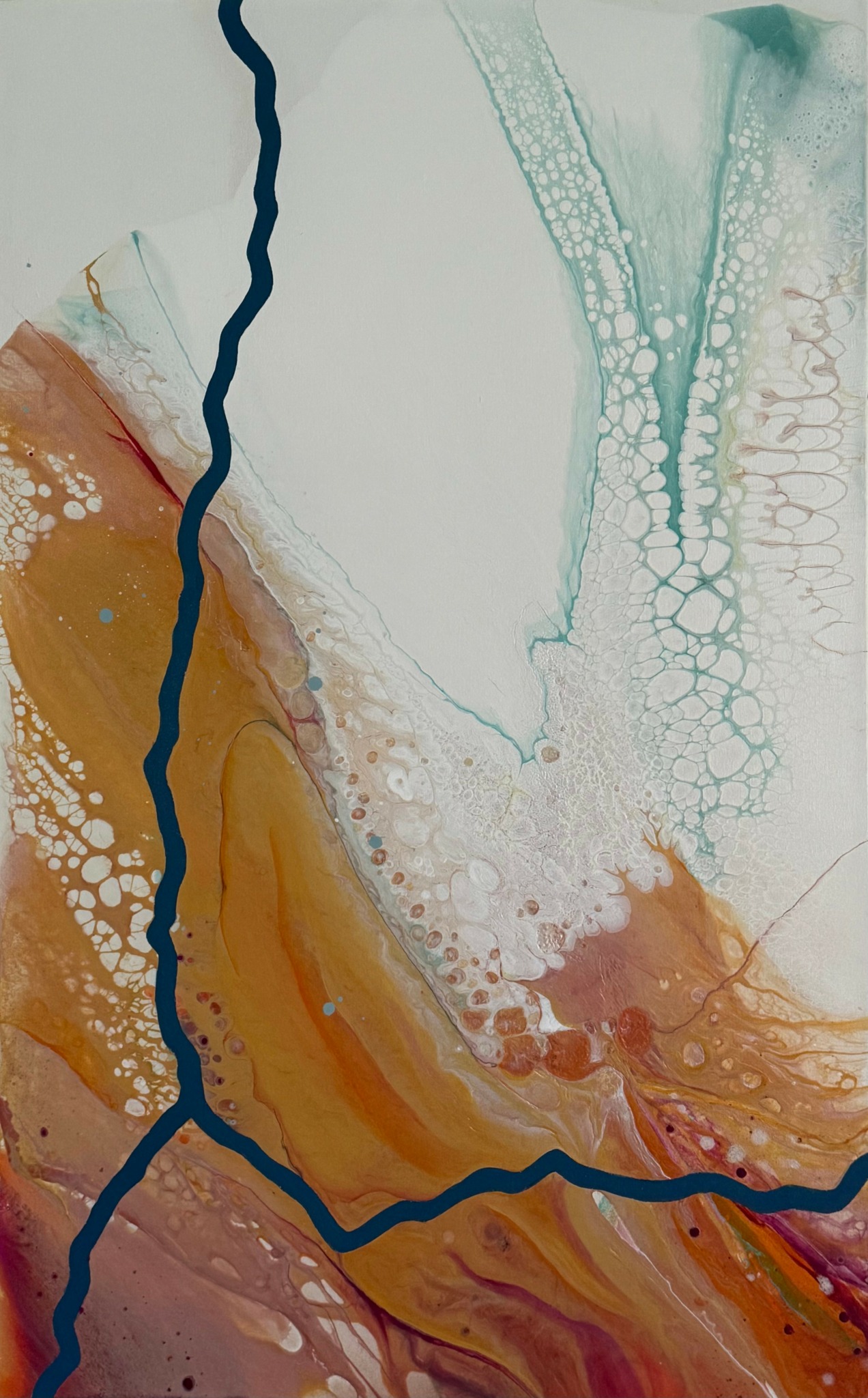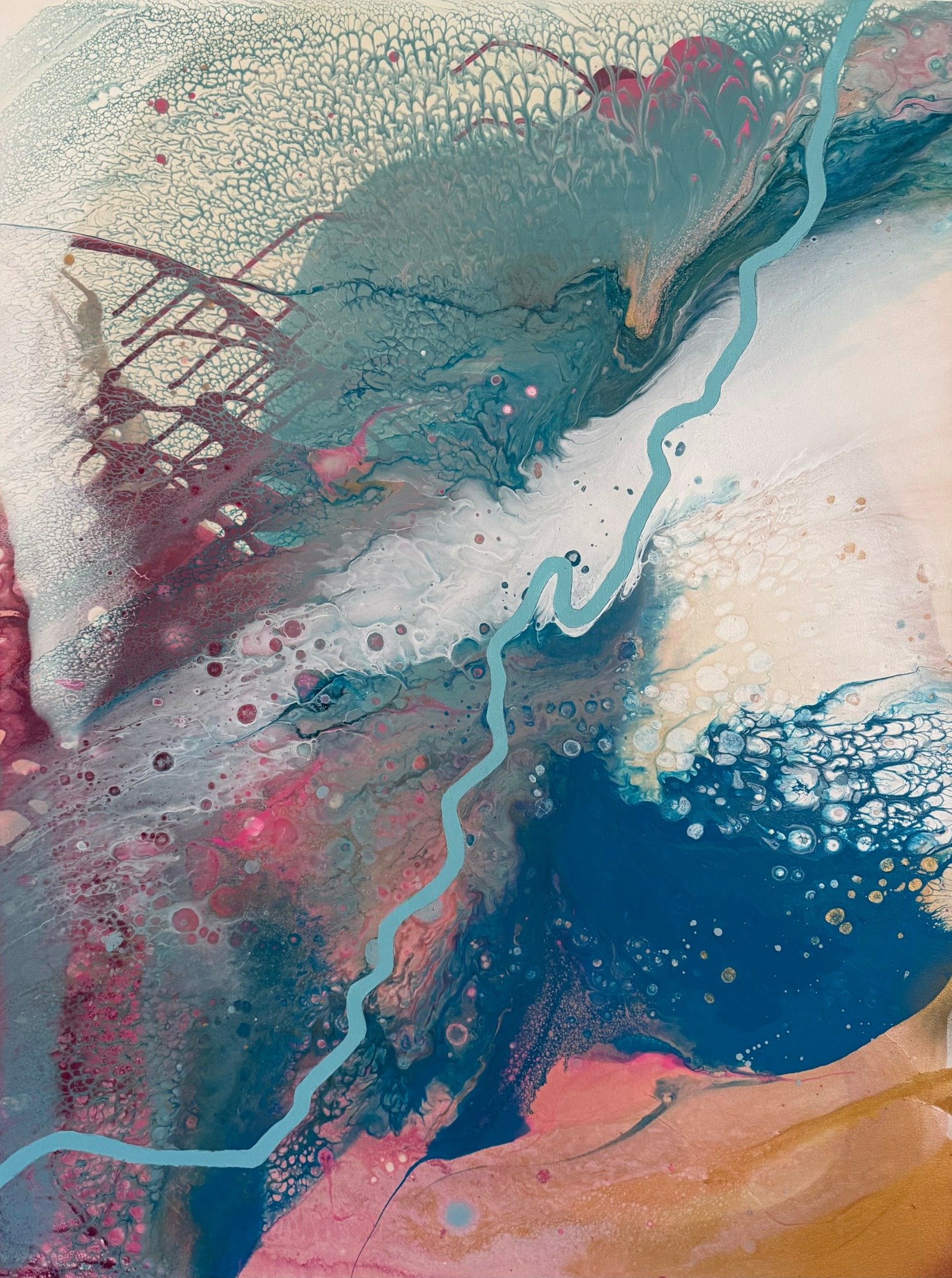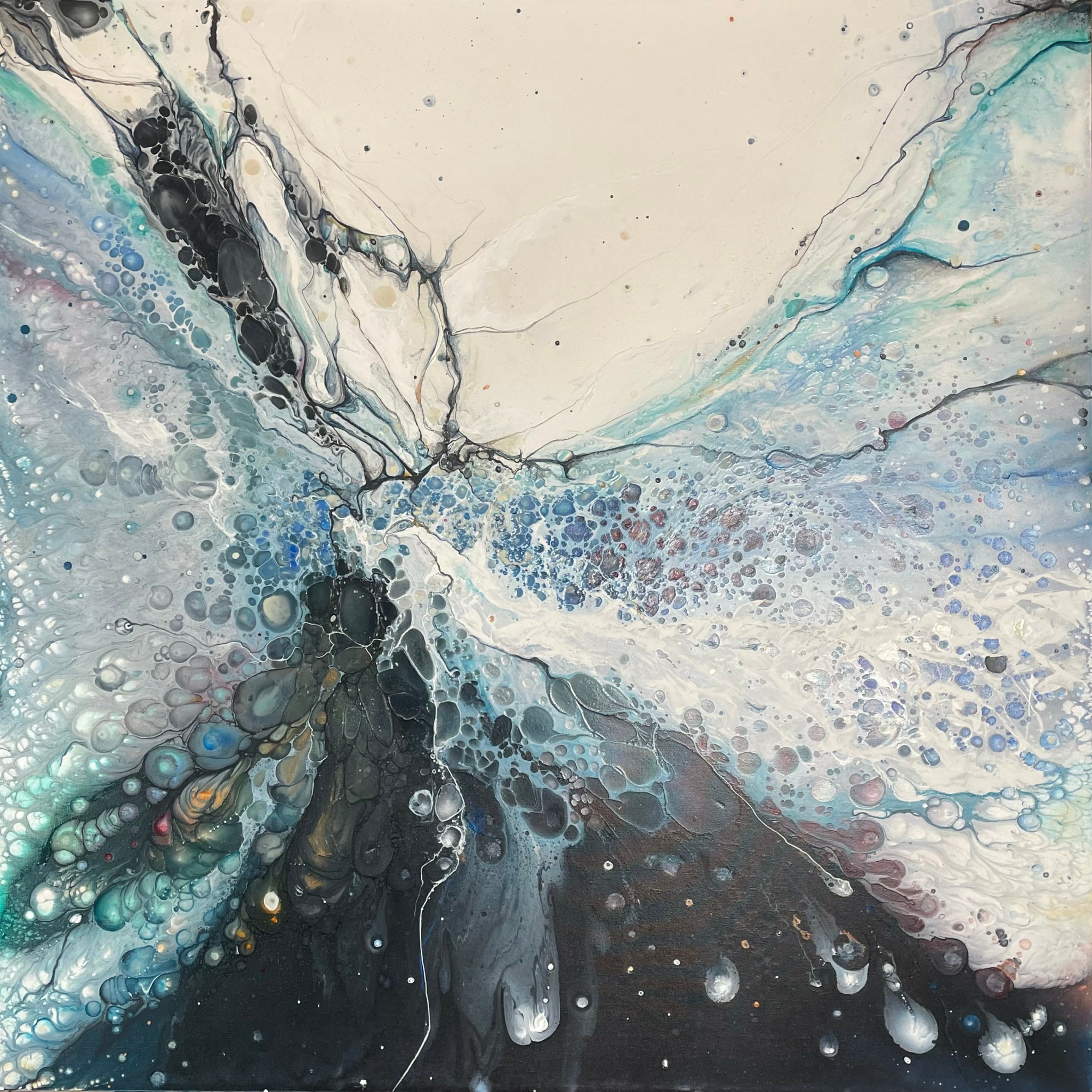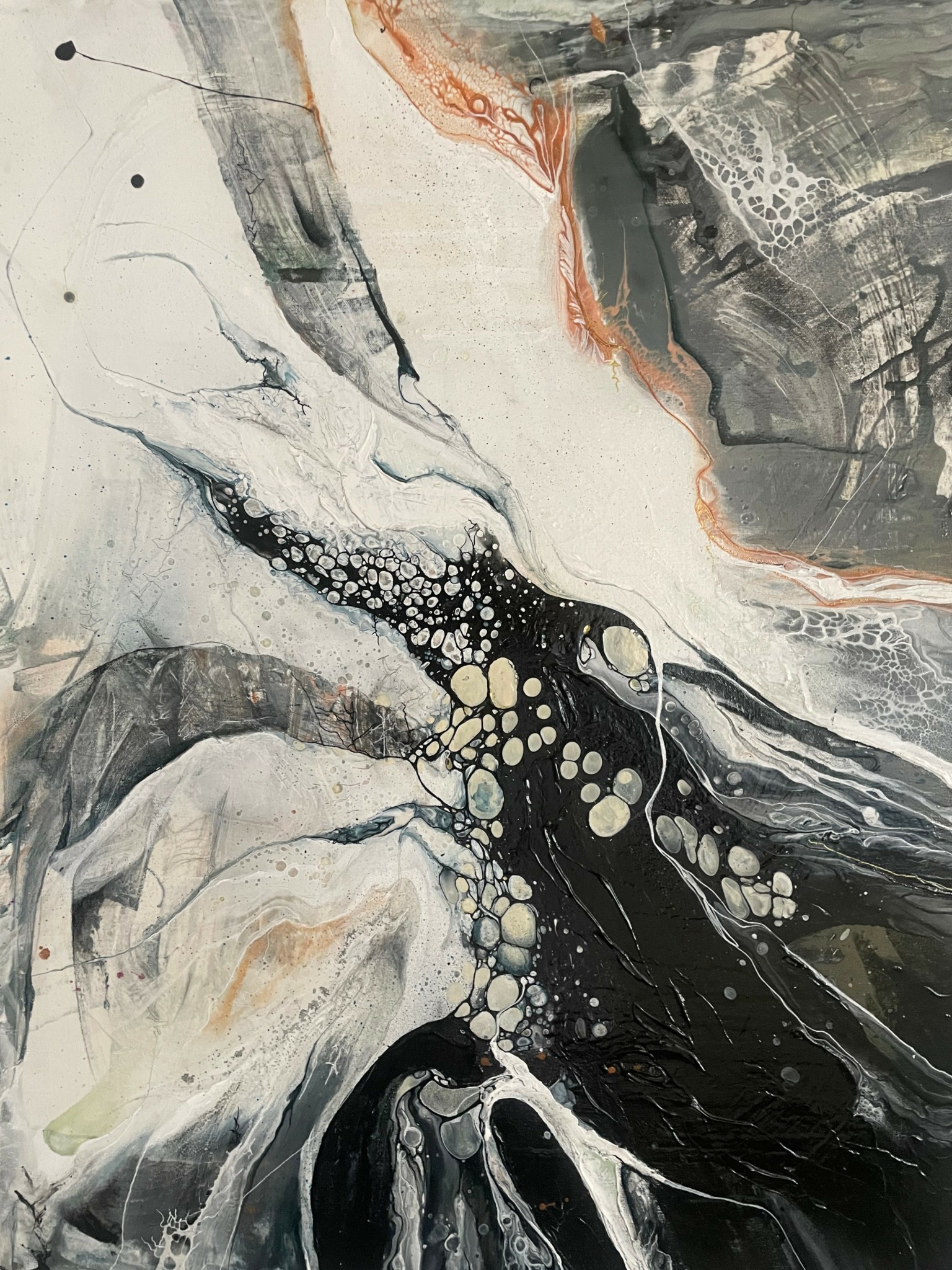We recently connected with Monica Bergquist and have shared our conversation below.
Monica, looking forward to hearing all of your stories today. What was the most important lesson/experience you had in a job that has helped you in your creative career?
Originally, I pursued a traditional career path in Dietetics. After completing my graduate program in Nutritional Science, I began working in a large medical facility, believing that the key to helping others lies in education and access to information. In other words, providing tools to improve physical health.
But during my time working with patients, I discovered something deeper. When people were stuck in the sterility of inpatient care, what they truly craved wasn’t more medical advice. It was joy. Joy found in color, art, nature, animals, *good* food, friends, and meaningful conversation. They didn’t want to discuss lab values or diagnoses. More often, they lit up when we talked about family, pets, childhood memories, or what made them laugh. They loved when animals paraded through, making crafts or venturing outside.
This became a turning point for me. Up until then, I hadn’t fully recognized the important role arts played in my life, or their ability to meet people where they are in their own journey.
I began to understand that healing isn’t only physical. Healing for humans includes so many facets, like emotions as well as how you fuel your body and mind. For me, art, specifically painting and drawing, reemerged not just as a passion, but as an essential part of my soul’s journey. It became clear that joy is not secondary to healing. Joy is healing, especially through the duality and complexity of grief.


Awesome – so before we get into the rest of our questions, can you briefly introduce yourself to our readers.
I’ve always been an artist. From a young age, drawing and painting were instinctive. Creating with colors, pencils, markers, pens and paints felt like natural extensions of how I processed the world. My Mom would tell you it’s because she only gave me plain paper for creating. This may very well be true.
I earned my undergraduate degree in Fine Arts, focusing on drawing and painting, but when life took a turn toward science to get a “job,” I still found myself drawn to hands-on creative work. I found solace and expression working in bakeries under pastry chefs, where crafting something beautiful and ephemeral felt like a different kind of canvas. There’s something magical about creating with your hands through process, and watch a full transformation of raw ingredients into something meaningful and whole. Even then, if I’m honest, my favorite part was always the decorating. I loved playing with color, texture, and detail. It was less about the recipe and more about expression. In that way, baking was just another form of painting.
When I’m not creating, I feel an undeniable void, like something essential is missing. After having children, I began designing elaborate birthday cakes as a creative outlet. They became temporary sculptures of love and celebration. But after losing my Mom to cancer, I truly recognized the urgency of honoring my own creative passions. Life is short. There’s no guarantee of later, or tomorrow.
That loss became a catalyst that pushed me to reconnect with my purpose. We found a way to run plumbing to a neglected part of our home and transformed it into a painting studio. It became my sanctuary, a space carved out of necessity and longing, and this helped me work through the duality and complexity of grief.
I rediscovered the deep, almost obsessive satisfaction of painting. It’s the one creative act I return to, again and again, above all others. If I can’t be outside in nature, I find myself recreating the feeling of it, the textures, the energy, the quiet rhythms and beautiful palettes. Painting becomes a way to invite nature in, to keep it close, even when life keeps me indoors.
My early work was abstract and figurative, even though I hadn’t formally studied abstraction. Years later, after time away from the studio, I began exploring fluid art techniques, intrigued by how artists use specific recipes to create controlled chaos. I experimented, adapted methods, and began working large-scale again, developing a visual language that felt uniquely mine. When studio renovations displaced me this past summer, I pivoted to oil landscape painting, a slower, grounding practice that kept me tethered to making and my natural surroundings.
Now, as part of the sandwich generation (ie, caring for children and an aging parent), I find that time and energy are often diverted elsewhere. I’ve learned this though – I can’t pour from an empty cup, and painting fills me. It tethers me to myself, and in that reconnection, I become more capable of showing up for others. I continue to evolve, and not just as an artist, but as a person learning to listen more deeply to what needs to be expressed and how. In this way, the work unfolds naturally, changing as life does. The process itself teaches me, and I trust that each piece is part of something larger than just the moment it was made. I’m grateful to be on this adventurous artistic path, learning every step of the way.


Any insights you can share with us about how you built up your social media presence?
Social media always felt like something happening out there, but I was content without being in that world. I never had a personal account, and I was just old enough to dodge the MySpace and Facebook waves. Fast forwarding a couple of decades, I started my Instagram account in 2024 after a mentor said maintaining a website and being on Instagram is just part of being an artist today. Pertinent content creation?
Truth is, I’ve come a long way in under two years. Cameras used to make me anxious. Now, I forget they’re rolling once I’m in the process. I don’t love content creation, but I’ve learned that it helps bridge the gap from my practice to other artists, galleries, and even collectors. More importantly, social media helps you represent yourself in a world that used to have so many gatekeepers.
The best advice I’ve received? Create and post consistently and authentically, and interest will follow. I don’t always hit that mark, but every time I start again, I get closer to my bigger goal — showing up as a full-time artist. Remembering WHY you’re online can help when it feels daunting.


In your view, what can society to do to best support artists, creatives and a thriving creative ecosystem?
To truly support artists and a thriving creative ecosystem, society needs to value creative work as real, essential work. I had to learn this for myself after going the traditional route … also, just imagine going through the pandemic without music, art or movies! That means investing in arts education, funding accessible spaces and programs, and ensuring fair pay for artists. Often, the first programs cut from early childhood education involve the arts.
This also doesn’t just mean exposure. Too often, artists are asked to contribute their time, labor, and ideas in exchange for visibility, as if that alone should be compensation. But exposure doesn’t pay rent, feed people, or buy supplies for creating. While visibility can open doors, it needs to be paired with real financial and structural support so artists can sustain their practice over the long term. We also need to shift the narrative away from the “starving artist” myth and instead create systems that support artists as contributors to culture, community, and innovation. Ultimately, it’s about building an environment where creativity is sustainable and celebrated.
Easy and free ways to support a local artist:
-sign up for their newsletter
-share their work on social media
-engage with their work on social media
-tell a friend or colleague about their work
-write a positive review or testimonial
-attend free openings and events
-offer a skill or service that you have
-use their art with permission
-be a cheerleader
These simple actions seem small, but they start to build the structure that artists can count on and move forward. By choosing to nurture artists, a community can recognize its own power. Pablo Picasso once said, “Any form of art is a form of power; it has impact, it can affect change — it can not only move us, but makes us move.” I hope everyone reading this makes room for art, and local artists to thrive.
Contact Info:
- Website: https://www.monicabergquistart.com/
- Instagram: https://www.instagram.com/mbergquistart/
- Facebook: https://www.facebook.com/monica.bergquist.2025


Image Credits
Monica Bergquist, MB Art


